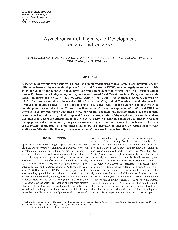摘要
Although fetal thymus organ culture (FTOC) has become widely used to investigate T-cell development, the differences between thymocyte development in vivo and in vitro (in FTOC) remain largely unknown. In this study, the viability and numbers of thymocytes recovered from embryonic thymus lobes in different gestation days (gd) mice or from 15 day embryonic thymus lobes cultured for different days in FTOC system were evaluated. The expression of CD3, CD4, CD8, CD95 ligand (CD95L), and CD69 on thymocytes were analyzed by FACS. The results showed that thymocytes, either in vivo or in vitro, could differentiate from double negative (DN) cells to double positive (DP) cells and to single positive (SP) cells. But the number of total thymocytes and the percentage of DP cells in vitro were less than that in vivo, and the expression of CD95L and CD69 on thymocytes in vitro was higher than that in vivo. Our results suggested that although thymocyte development in vitro could recapitulate thymic development in vivo, the proliferation of thymocytes in vitro was less intensive than that in vivo; the differentiation of thymocytes in vitro was delayed compared with that in vivo; and the apoptosis and activation of thymocytes in vitro were higher than that in vivo. In conclusion, FTOC is a useful system for the study of T cell differentiation, but it is necessary to interpret the results from in vitro studies carefully since the thymocyte development in vitro is asynchronous from that in vivo.
